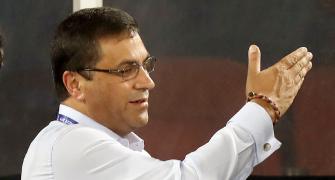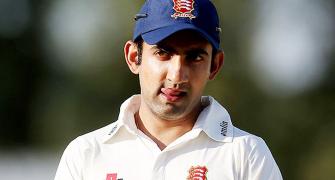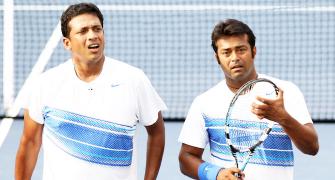'The dressing room is a precinct that abounds with all the complexities that make up human nature -- and the unpredictable consequences that can emerge from interpersonal relationships.
'A cursory study of cricket history throws up interesting (and some hugely surprising) examples of conflict between players from the same team,' says Ayaz Memon.
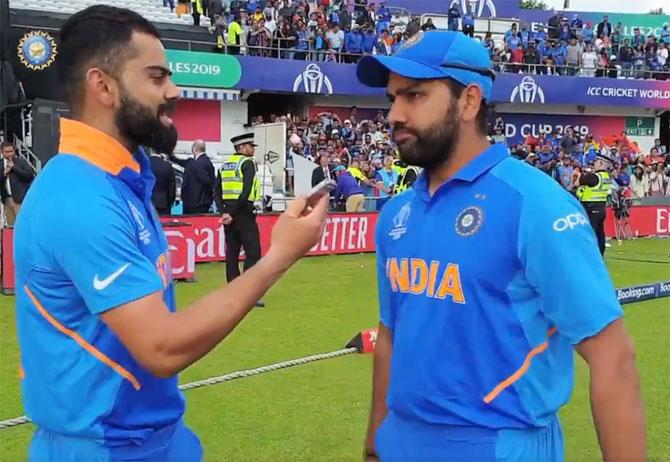
When stories about the rift between Virat Kohli and Rohit Sharma, India's two best batsmen currently, started swirling around, I was surprised but hardly shocked.
Dismaying as this may be for Indian cricket fans, the situation is not as alarming as feared even if the story is true (Kohli has denied it vehemently): unless the players themselves allow it to spin out of control.
Rifts and personality clashes are not uncommon in sport. In the 1980s, early in my career writing on sport, a budding first-class cricketer (who must remain unnamed) once told me how troubled he felt in his own dressing room.
"More than discussing strategies to beat opponents, much of the talk is centred around why and how one team member needs to be cut to size," he said. This was an extraordinary admission and left me stunned for several days.
Wasn't team sport about fighting a common cause, as it were, driven by camaraderie? What this player was telling me seemed like subversion, quite the opposite of team spirit. It was both dismaying and perplexing.
But there is a twist in the tale. A decade or so later, I asked the same player -- by now a veteran on the cricket circuit -- how that battle within the dressing room had played out.
"Oh that?" he said with a laugh. "After a few rocky months, it kind of petered out. Equations between players got realigned and everybody found his own space."
Interestingly, the player his teammates had wanted to "cut down to size" all those years ago had gone on to captain the team! "And did a fine job too," said my source.
"He jelled us into an ambitious, combative unit, tiding over differences, sometimes with empathy, often with an iron hand. There were conflicts in the dressing room still, but nothing unmanageable."
Dressing room dynamics are fascinating. It doesn't work in a simple, linear manner as the anecdote above establishes.
In fact, the dressing room is a precinct that abounds with all the complexities that make up human nature -- and the unpredictable consequences that can emerge from interpersonal relationships.
A cursory study of cricket history throws up interesting (and some hugely surprising) examples of conflict between players from the same team.
Indeed, the frequency with which this recurs slays the belief that team members live in jolly bonhomie all the time, bound by camaraderie in pursuing a common objective.

Even Sir Don Bradman, unarguably the most towering figure in cricket, deified for his extraordinary batting achievements, admired and loved all over the world, did not quite command the same sentiments in his own dressing room. Several of his colleagues mistrusted him.
Their reasons ranged from his alleged aloofness, arrogance, selfishness and mercenary tendencies, among many.
Countless books have been written on Bradman and his wondrous exploits, and quite a few of them feature his fraught relations with his team members, particularly when he was in his prime.
Interestingly, during Bradman's 20-year career, there were only two rubbers Australia lost: in 1928, when he made his debut, and in 1932-33 in the controversial Bodyline series. Bradman's batting was the backbone for Australia becoming a raging power in cricket.
This threw up a conundrum that I grappled with for a fair while: if the atmosphere in the dressing room was not exactly congenial because of Bradman, wouldn't players be working at cross-purposes? Would this not affect performances and results?
While this seemed like a reasonable line of questioning, it was easily answered by the fantastic talent that Australia possessed during the "Bradman Years", not least the phenomenal performances of the great batsman himself. Beating such a side, even with internal squabbles, was not easy.
However, there are sundry examples of teams not quite of the same calibre also doing remarkably well.
This removes the conundrum, replacing it with an altogether different dimension -- one that in my opinion has more credibility.
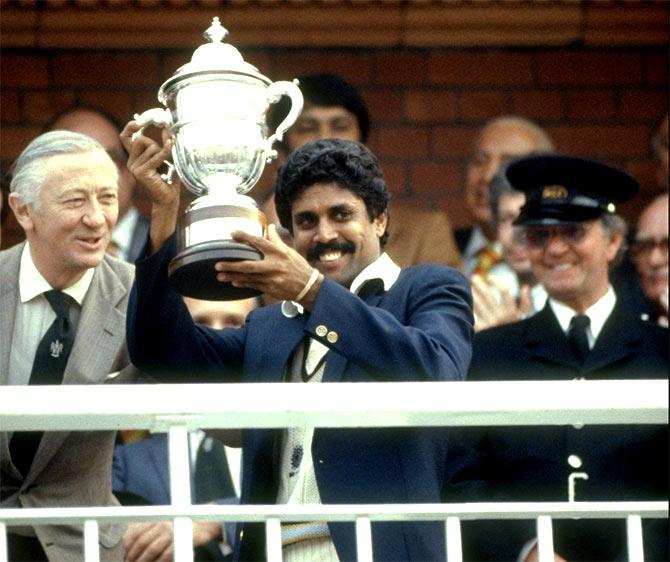
The 1983 World Cup, it might be recalled, was won by India in stunning fashion when they beat odds-on favourites West Indies.
India's record in limited overs cricket till then had been dismal. Nobody gave Kapil Dev's team a hope in hell to win.
Worse, at that point in time, Kapil's relations with Sunil Gavaskar had hit a trough.
Gavaskar was among the world's leading batsmen, and former captain, Kapil, among the best all-rounders.
They were the two prima donnas of Indian cricket enjoying great following and power. If they were at loggerheads, the team's performances would suffer, it was widely believed. The results were to the contrary.
A more recent example in Indian cricket of why a difference of opinion between stellar players -- while unseemly and undesirable -- may not necessarily impact team effort adversely comes from 2004-5 when India toured Pakistan.

Controversy erupted when Rahul Dravid -- captaining in the first Test as Sourav Ganguly was unfit -- declared the Indian inning with Sachin Tendulkar stranded on 194. Apparently, there was some misunderstanding about when the declaration would be timed.
This had India's two best batsmen at loggerheads for a while. Tension in the team then was palpable and there was serious apprehension about how the team would fare against the arch-rivals. In the event, India went on to win a series in Pakistan for the first time ever.
There are countless examples of teams succeeding despite star players being in conflict.
In the 1960s, Sir Garfield Sobers and Rohan Kanhai, the two best West Indies batsmen, did not always see eye to eye.
But their brilliance -- often in tandem -- helped West Indies become the most feared and entertaining side in the world.
One cannot find two more contrasting personalities than Imran Khan and Javed Miandad in cricket.
Their careers overlapped, they were often in conflict, particularly when the captaincy went back and forth between them. But the best, most successful phase for Pakistan cricket came when these two played together.
The Australian cricket team has traditionally been seen as the most hardy, combative unit in the sport.
Till very recently, the Aussie way of playing was the envy and desire of the rest of the cricket world. But behind the façade, players often had serious differences.
Shane Warne, for instance, was not a great admirer of Steve Waugh (his captain for the most part), or Adam Gilchrist.
But he thrived under them, and collectively they made up a side that is rated among the best in the history of cricket.
I'll make a brief digression here to another sport to highlight this syndrome further.
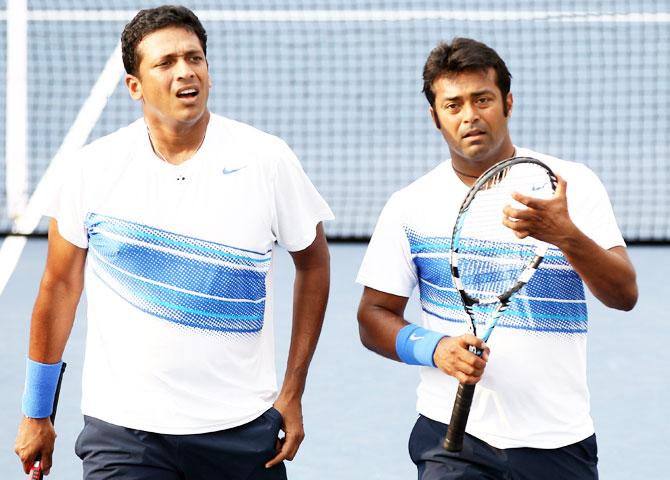
Leander Paes and Mahesh Bhupathi spent the better part of their doubles partnership not seeing eye-to-eye on most matters -- except what they did on the tennis court, where they chest-thumped their way to many titles.
Just so that it is not misunderstood, these examples do not validate a contrarian position that conflicts and clashes between players in a dressing room can have no deleterious effect.
Kevin Pietersen, rated as England's best batsman of the past half century, had his brilliant career truncated because of disputes with captain Andrew Strauss and several other players in the team.
Closer home, Ganguly and coach Greg Chappell, whom he had handpicked, fell out so badly that Indian cricket went into a virtual tailspin trying to manage the conflict. It ended with India being knocked out of the 2007 World Cup in the first round itself.
The key issue, however, is not whether difference of opinion between players is a major stumbling block.
That is negating the role of human nature -- as mentioned earlier -- and its tugs and pulls in any group activity, and seeing sportspersons through rose-tinted glasses instead of as human beings.
The issue rather is how quickly and in what way the conflict is resolved by feuding players to restore equilibrium in the dressing room.


